As someone who has conducted numerous Product & Technology diligence sessions, I’ve sat in so many product demos where I learned a lot about the features of the product but had no clue as to how these features helped their customers in their day-to-day function.
Not having a context of your customers, their pain points, and the before/after states make all products look the same for someone not familiar with your domain.
Your investors are not looking to buy your products and neither can they empathize with the pain points your products solve. Rather, they are interested in buying a return on their investment. They want to know how you add value to your customers’ lives.
Investors want to better understand the types of pains your products eliminate in the customers' lives that prompt them to buy and renew your products year after year.
They want to know how many more people in the market have similar needs so that the business can scale to capture more of the existing market share or move into a new market.
Your product demo is an opportunity for you to have a conversation with your investors about the market, the value you deliver to a segment of users in the market, and how you transform their lives. It’s rarely ever about the Product unless you are doing a sales demo (See Tip #3).
So let’s dive into the details. Some items below might read as common sense but are not commonly displayed during a demo.
1) Demo your revenue-producing products
It’s common for Enterprise Software companies to have a product portfolio that has multiple products servicing the customer across the value chain or products that target multiple verticals.

In this scenario, demo products in the order of highest-grossing revenue to lowest. This sounds obvious but I’ve seen on numerous occasions companies showing up unprepared to demo their highest grossing product. One of two reasons this happens, either the product is complicated to set up for a demo or they are excited about a new product in the pipeline and spend all their time demoing a prototype yet to be launched in the market or a nascent product in the market.
Investors want to see which products generates the majority of revenue today and whether this flywheel will continue once they come in as investors.
They are also interested in how you plan on growing and expanding into the future through new product innovations to ensure financial projections and models can be supported in their investment thesis.
So with multiple products in your portfolio, demo the highest-grossing product first, followed by maybe 1 or 2 other products that align with the company’s vision and roadmap into the future. Pick the smaller products to demo based on your understanding of where the market is headed, and how your investors are placing their bets on your organization.
2) Every story has two sides

Every story has 2 sides and it’s no different in your product demo.
Almost all enterprise software has the primary persona, the user that is getting value and benefits from your product, and the secondary persona, the user that manages the product/platform for the primary persona to continuously receive value.
The secondary persona might be the administrative contact or support user in a customer’s organization that maintains their instance and facilitates data integration, security, or other administrative functions.
You want to ensure you provide sufficient coverage during your demo to highlight that your product is just as valuable to the secondary persona, especially during the Customer Onboarding process (See tip #4)
3) Do not focus on your product
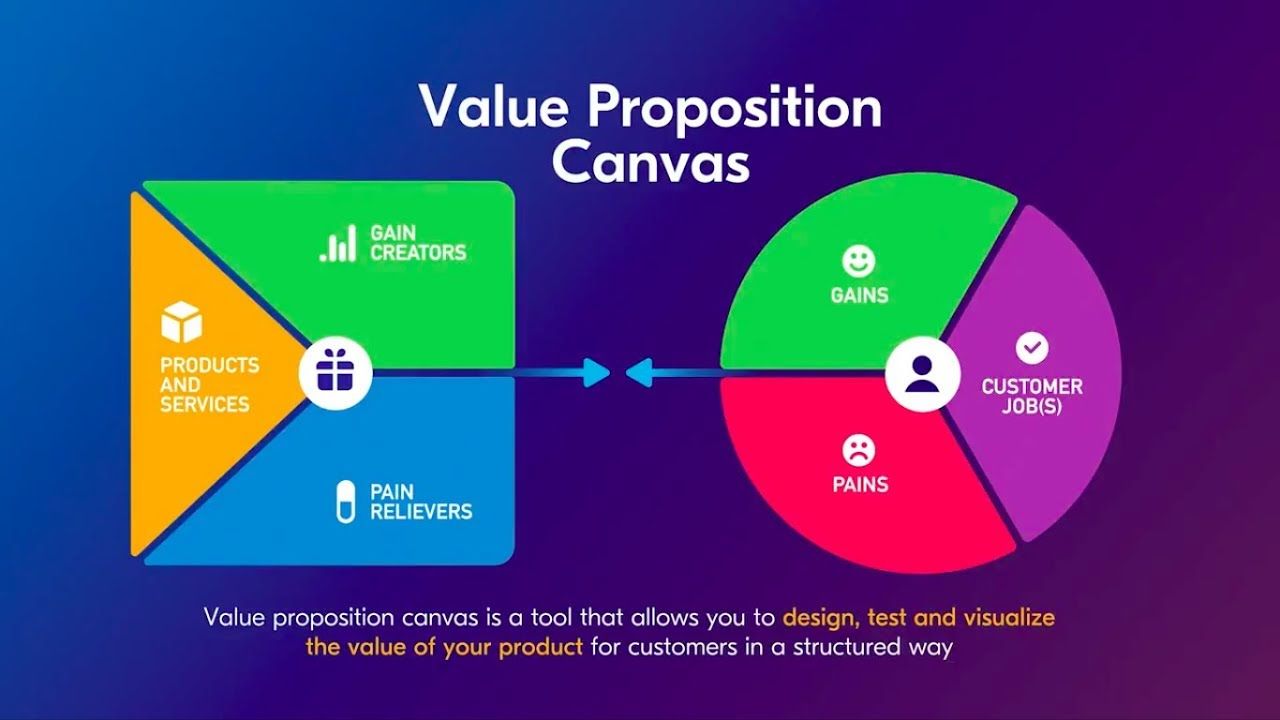
Wait a product demo that doesn’t focus on the product?
Keep in mind who your audience is for this demo.
You are not selling your product in this demo. You are selling your company to investors. Unfortunately, your investors are not intimate with the problem space at an operational level to recognize a good solution from a bad solution. Neither are they interested in every feature, configuration, or setting available in a product. Save all this for your Sales demo where your audience has the business domain expertise and can relate firsthand to the problems you are solving for them.
What is important to your investors is understanding the types of problems you are solving, the magnitude of these problems for your customers, and the time it takes for your customers to realize value, all of which is critical over your product features.
And when you do talk about features, highlight how your features are differentiated from your competitors and how specific features drive stickiness in your product making customers return year over year.
Here are 4 tactical things you can do immediately in your next product demo to investors.
i) Focus on the Jobs-To-Be-Done (JTBD) for your key personas
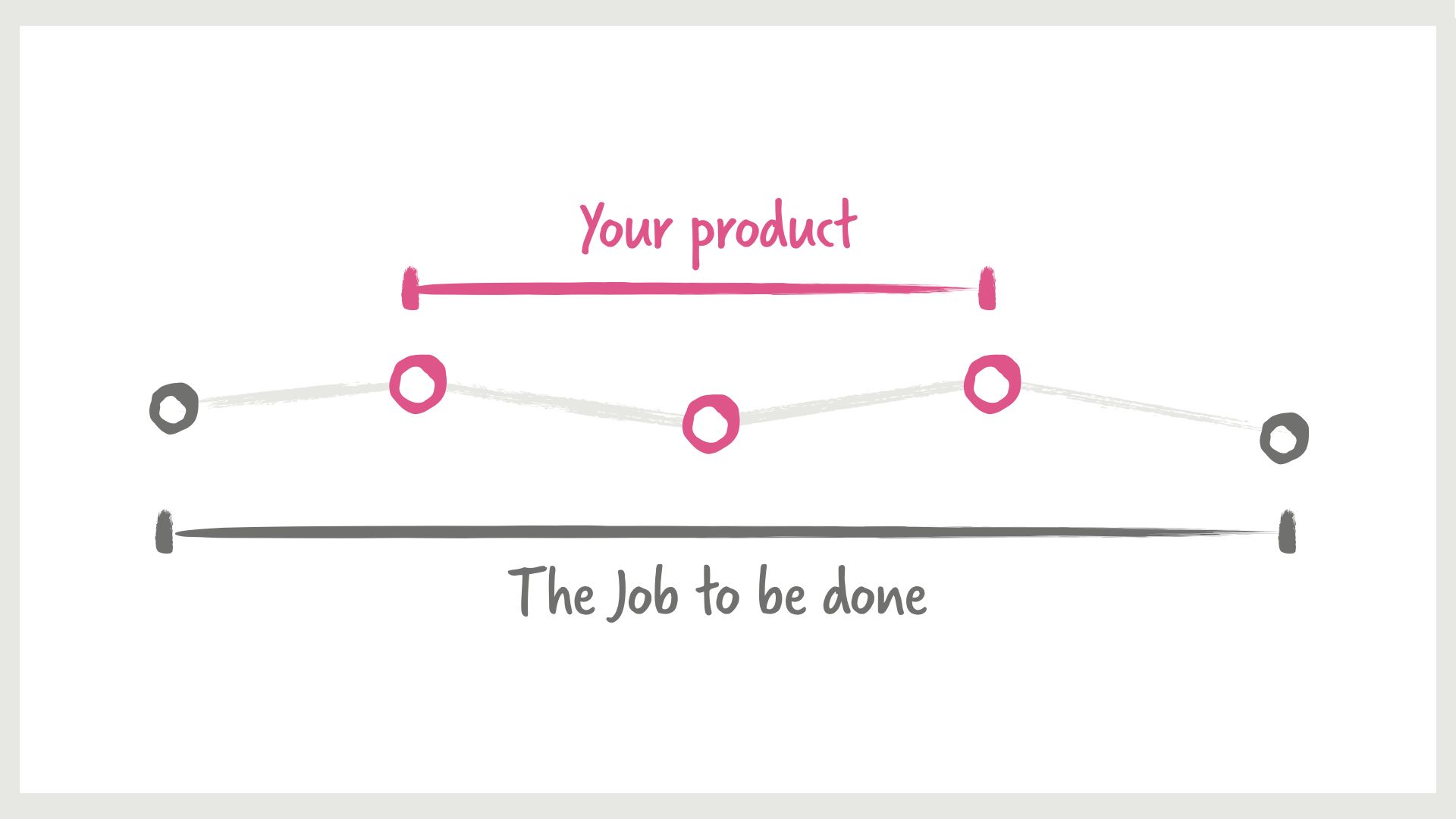
Highlight the key 3 to 5 tasks/jobs your primary persona has to carry out in their function and show how your product simplifies the life of the user. When showing each task/job within your product workflow, highlight why this is a critical job function and the pain points the user goes through if they were to do it manually without a software-powered solution or a competitor's product.
ii) Highlight Time To Value for the Primary Goal
You users carry out many different tasks in your product to support their job function however there are usually one or two tasks that they do repeatedly that provide immense value. Focus on these tasks and highlight the time to value for these specific tasks.
For example, say we are demonstrating a Social Media Ad Management product (e.g. SocialPilot, AdRoll, etc.) and the primary goal for this product is to generate multiple variations of an Ad and publish them on Facebook. Now while this product might have many other features (e.g. reporting, optimization, content creation, etc.) the user recognizes and receives immense value when they can publish a multi-variate ad on Facebook in a matter of minutes, what might have taken them hours if they were to do this directly inside Facebook's Ad Management platform.
This is the aha moment that keeps your customers using your product over and over!
iii) Features that drive stickiness and renewals
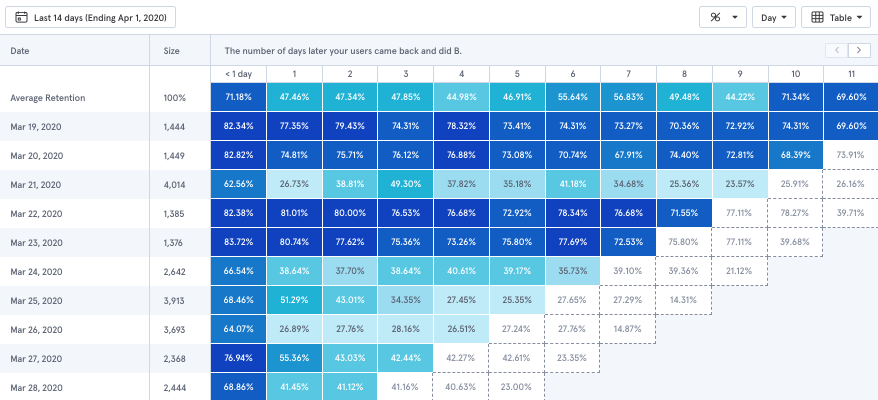
During your demo, you want to pause and highlight features along your JTBD journey that creates stickiness and facilitates renewals. This ultimately leads to better gross retentions, a metric that your investor will have an eye on during the diligence process.
The more features you can demonstrate that create stickiness in your product, the better equipped (and confident) your investors will be to model a realistic rate of renewals to help with their retention metrics.
iv) Your USP or differentiation in the market
Demonstrate how you stand out in a competitive market by highlighting your differentiation in your product. It could be features your competitors don’t have yet, a unique way in which you’ve implemented your user experience which leads to better customer experience, or proprietary algorithms that produce better business results for your customers.
While your product is an important aspect of your demo, it plays a supporting role in your users' lives. Focus on your customers, their problems, and how you can simplify their lives and enable them to achieve results that they couldn’t without your product.
You want to leave your investors knowing the value your product unlocks for your customers, not your feature set.
4) Highlight your customer onboarding process
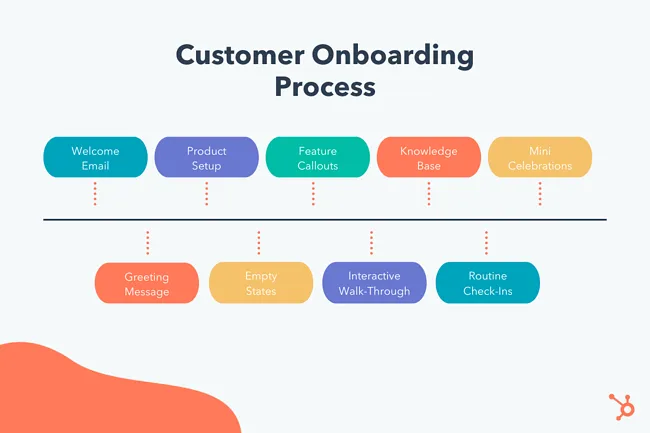
Customer onboarding is a topic that is often neglected during demos because most enterprise software companies have a very manual, and hands-on approach, requiring significant lift from a Professional Services team.
Investors will want to know how easy or hard it is to onboard new customers as it affects the speed of growth, revenue recognition and gross margins for a software business.
If your product has a robust set of capabilities and features to allow for self-service onboarding, highlight that during the demo when you showcase the Admin (secondary persona) JTBD.
If you are working on streamlining your onboarding process and reducing your Professional Services footprint, highlight in your Product Roadmap when you plan on introducing self-service features and automation so that it can be accounted for in the investor's financial models.
The less time and human capital required to onboard a new customer, the better the financial metrics will be for your business which increases investor confidence.
5) Have your Head of Product conduct your demo

Your Product Demo isn’t just a venue to showcase your product. It’s also a time when investors gauge the talent on the leadership team. Investors typically assess the talent of your organization from the top down so you want to make sure you have the right representation in the room.
They want to know that your product leader is a strong candidate who can drive the future growth and evolution of the product portfolio to achieve investment objectives. The ideal person should be able to not just run an effective demo but also answer questions at the intersection of Business, Market, Product, and Customers.
Larger organizations might have a Chief Product Officer (CPO) but it could be a VP or Director of Product, whoever is responsible for the Product function at your organization. In smaller companies, it’s not uncommon for this person to be the CEO or even sometimes the CTO.
Regardless of title, make sure you have the Head of Product conducting your demo, not someone in Sales.
6) Use real data
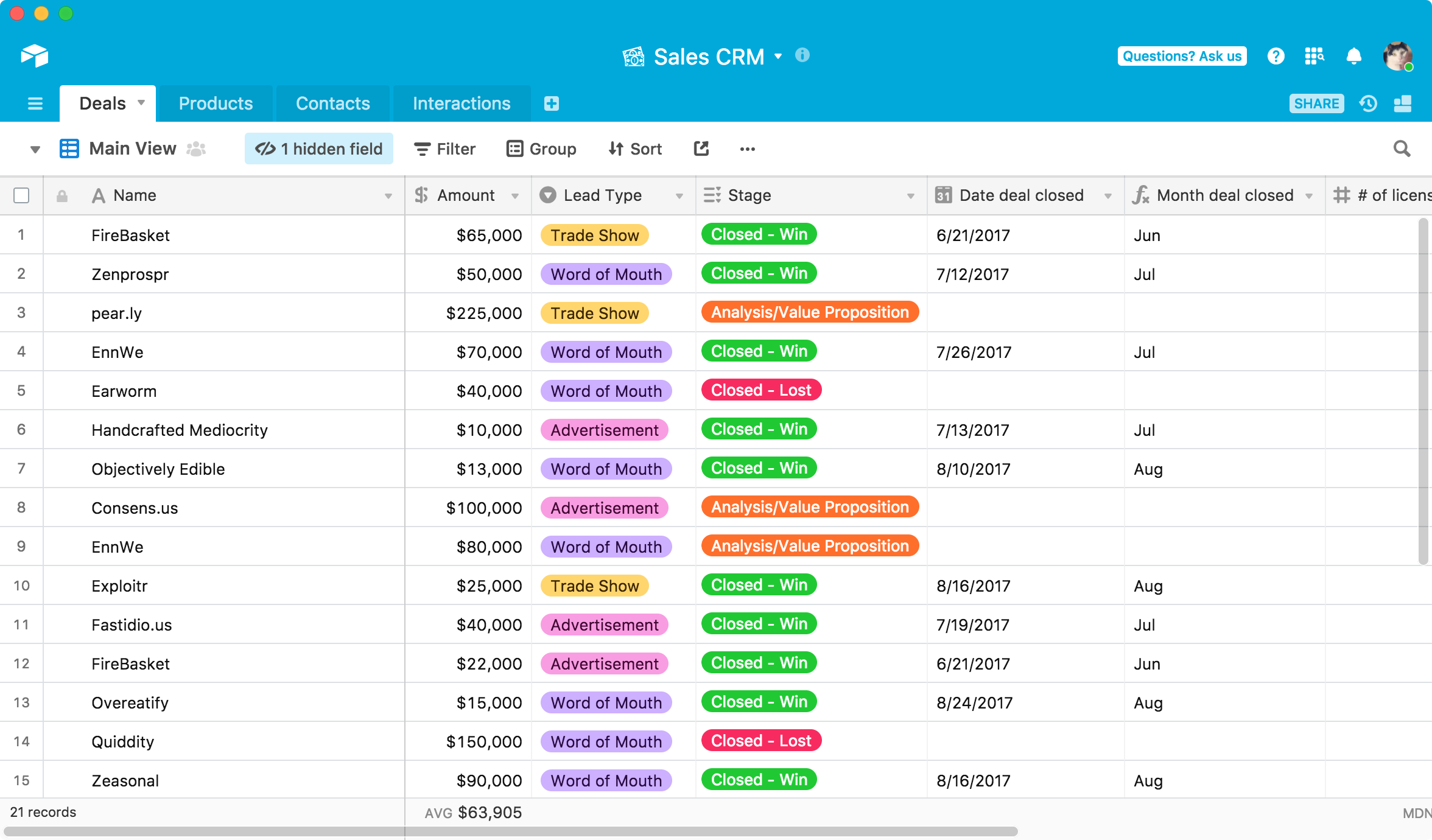
Another no-brainer but I’ve seen so many demos with empty instances and garbage data that doesn’t support the narrative of the demo.
Invest the time before your demo to run through your JTBD and set up all the pre-requisite data you need in the system to deliver an impactful demo. Open up multiple tabs or browser windows if you need to toggle between users ahead of time to make sure you can smoothly transition between roles or use cases.
While lacking this level of polish is never a deal-breaker, it will help you run a smoother session with fewer interruptions to help you get through your full agenda and satisfy the needs of your investors.
7) Own your agenda and time
Agenda
Product demos tend to run the clock down and go way beyond the allotted time because it’s a time where everyone reactions and questions to what you show them.
A badly planned demo will lead you down all sorts of rabbit holes, ultimately to the detriment of you not being able to complete your demo and your investors not fully understanding the value of your product.
Instead, spend 5 minutes at the very beginning to walk your audience through the agenda for the demo. Highlight the 3 to 5 JTBD that you will walk through and why it’s important to focus on these JTBD over anything else.
1) Managing creative assets to run experiments
2) Creating multiple customer segments
3) Create a multi-variate Facebook AD
4) Reporting on Ad performance
5) Tweaking in-flight Ads for performance improvements
6) Onboarding Process
You should also ask your audience if they want to see anything else. Sometimes people come into these sessions with preconceived notions about a bad UX, missing feature, or a bad customer experience based on what they read online or heard from a past customer. You want to make sure you can address these misconceptions by the end of the demo and set the record straight.
Make sure you understand what is important to your investors before you proceed with the demo and timebox the agenda review and discovery to 5 minutes.
Parking Lot

You will throughout your demo receive questions, some of which directly apply to what you are showing and some don’t. To be effective in your demo, you need to know how to facilitate questions that might take longer to answer or derail your demo flow.
An effective technique to use is the “Parking Lot” strategy to facilitate your demo. If questions come up that you don’t feel you can address in under 30 seconds, add them to the parking lot and tell the room you’ll come back to it at the end. If some of these questions will be answered later in the demo, add them to the parking lot and mention that they will be addressed later in the demo.
You want to avoid going down the rabbit hole of how features work technically, when a new item on the roadmap will be released or other esoteric questions that don’t contribute to the understanding of your customers, their pain points, and how value is delivered to your customers.
There will be plenty of time in other diligence sessions to dive deeper into the technology, sales, finance, and other functions of the organization.
Pause
It’s easy to be carried away and talk through your demo session for 60 minutes straight but you should check yourself for pauses to ensure the room understands what you’ve showcased and provide them an opportunity to ask questions.
Every room is different and some folks might feel it is offensive to cut you off while you are talking and never get a question in. A pause gives them a chance to participate in your demo.
Look for acknowledgments (nods) that confirm they understand what you are presenting or puzzled faces that indicate you either need to slow down or provide opportunities for questions.
Sometimes leaving an awkward silence hanging in the room (up to 5 seconds) gets people to open up, elaborate on a question, or provide feedback. Find key moments during your demo to inject these long pauses to learn more about what is important to your audience.
Wrap Up
A great demo should feel like a conversation between yourself and your investors about your customers, their JTBD, and how your product solves their pains and draws them deeper into your product ecosystem.
Keep your customer at the forefront of this story and highlight how your product helps improve the lives of your customers and generate desired business results.
If you find yourself running your own diligence, either buying a Software company for an investment fund or doing an M&A tuck-in into your own company, share this list with the companies you are looking so that both parties can be part of an effective demo session.
